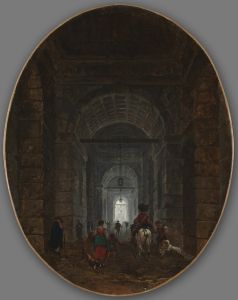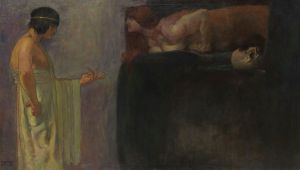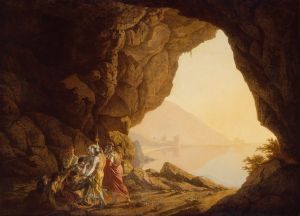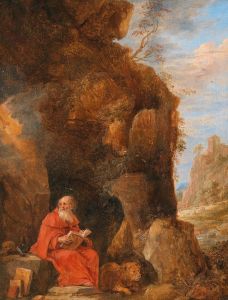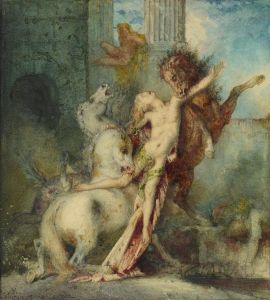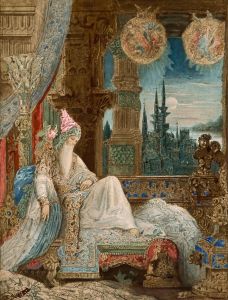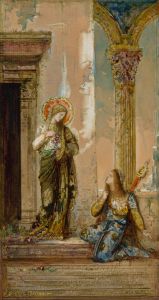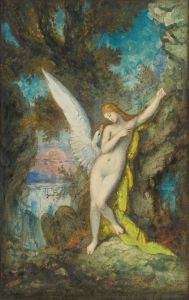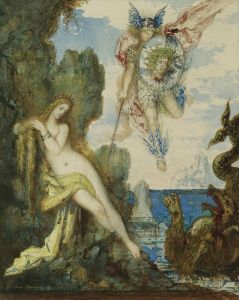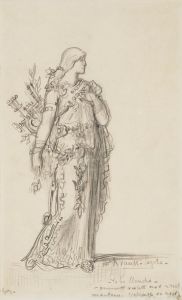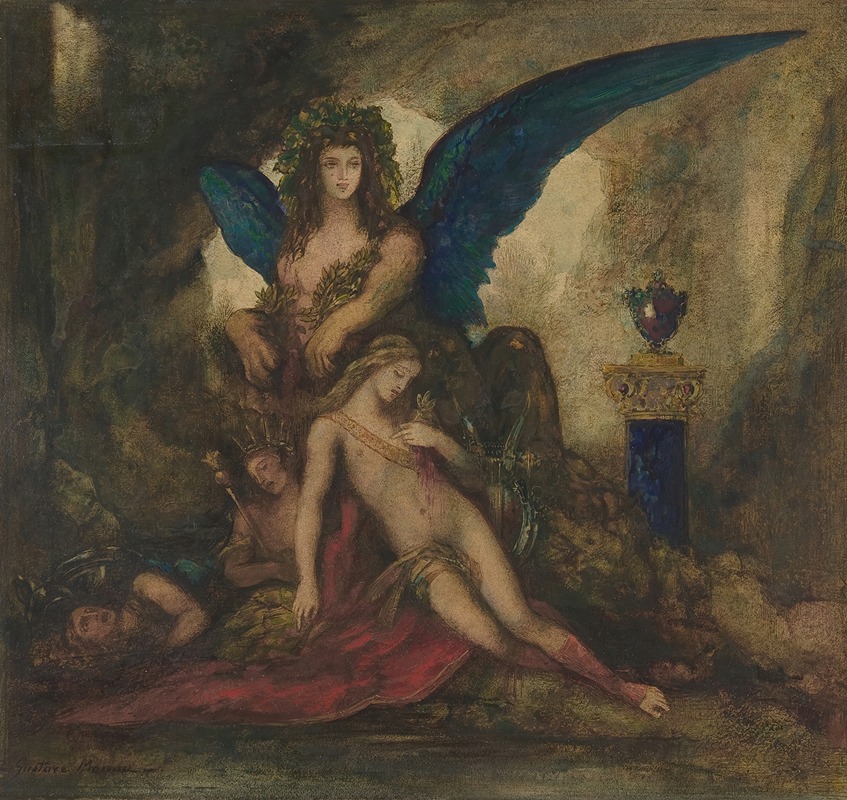
Sphinx in a Grotto
A hand-painted replica of Gustave Moreau’s masterpiece Sphinx in a Grotto, meticulously crafted by professional artists to capture the true essence of the original. Each piece is created with museum-quality canvas and rare mineral pigments, carefully painted by experienced artists with delicate brushstrokes and rich, layered colors to perfectly recreate the texture of the original artwork. Unlike machine-printed reproductions, this hand-painted version brings the painting to life, infused with the artist’s emotions and skill in every stroke. Whether for personal collection or home decoration, it instantly elevates the artistic atmosphere of any space.
"Sphinx in a Grotto" is a painting by the French Symbolist artist Gustave Moreau, known for his intricate and imaginative works that often draw on mythological and biblical themes. Moreau, who lived from 1826 to 1898, was a prominent figure in the Symbolist movement, which sought to express ideas and emotions through symbolic imagery and themes, often delving into the mystical and the fantastical.
The painting "Sphinx in a Grotto" exemplifies Moreau's fascination with mythological subjects and his meticulous attention to detail. While specific details about the creation date of this particular painting are not widely documented, Moreau's broader body of work during the late 19th century often explored themes of mythology, dreams, and the subconscious, which were central to the Symbolist movement.
In "Sphinx in a Grotto," Moreau depicts the enigmatic figure of the Sphinx, a creature with the body of a lion and the head of a human, set within a mysterious grotto. The Sphinx is a recurring motif in Moreau's work, symbolizing mystery, enigma, and the intersection of human and animalistic qualities. The grotto setting adds an element of seclusion and introspection, inviting viewers to ponder the deeper meanings and questions posed by the presence of the Sphinx.
Moreau's technique is characterized by his use of rich colors, intricate details, and a dreamlike quality that blurs the lines between reality and imagination. His paintings often feature elaborate compositions and a sense of otherworldliness, drawing viewers into a realm where myth and reality intertwine. This approach is evident in "Sphinx in a Grotto," where the detailed rendering of the Sphinx and the atmospheric setting create a sense of mystery and allure.
The Symbolist movement, of which Moreau was a key figure, emerged as a reaction against the realism and naturalism that dominated much of 19th-century art. Symbolists sought to convey the unseen and the intangible, using symbols and allegory to explore themes of spirituality, emotion, and the human psyche. Moreau's work, including "Sphinx in a Grotto," reflects these ideals, inviting viewers to engage with the painting on a deeper, more introspective level.
Gustave Moreau's influence extended beyond his lifetime, impacting subsequent generations of artists and contributing to the development of modern art movements. His emphasis on imagination, symbolism, and the exploration of mythological themes resonated with artists seeking to break free from traditional artistic conventions.
While "Sphinx in a Grotto" may not be as widely recognized as some of Moreau's other works, such as "Oedipus and the Sphinx" or "The Apparition," it remains an important example of his artistic vision and his contribution to the Symbolist movement. Moreau's legacy is preserved in part through the Musée Gustave Moreau in Paris, which houses a significant collection of his works and offers insight into his creative process and artistic philosophy.
In summary, "Sphinx in a Grotto" by Gustave Moreau is a testament to the artist's skill in blending mythological themes with a rich, symbolic visual language. The painting invites viewers to explore the mysteries of the Sphinx and the symbolic meanings embedded within Moreau's intricate and imaginative compositions.





